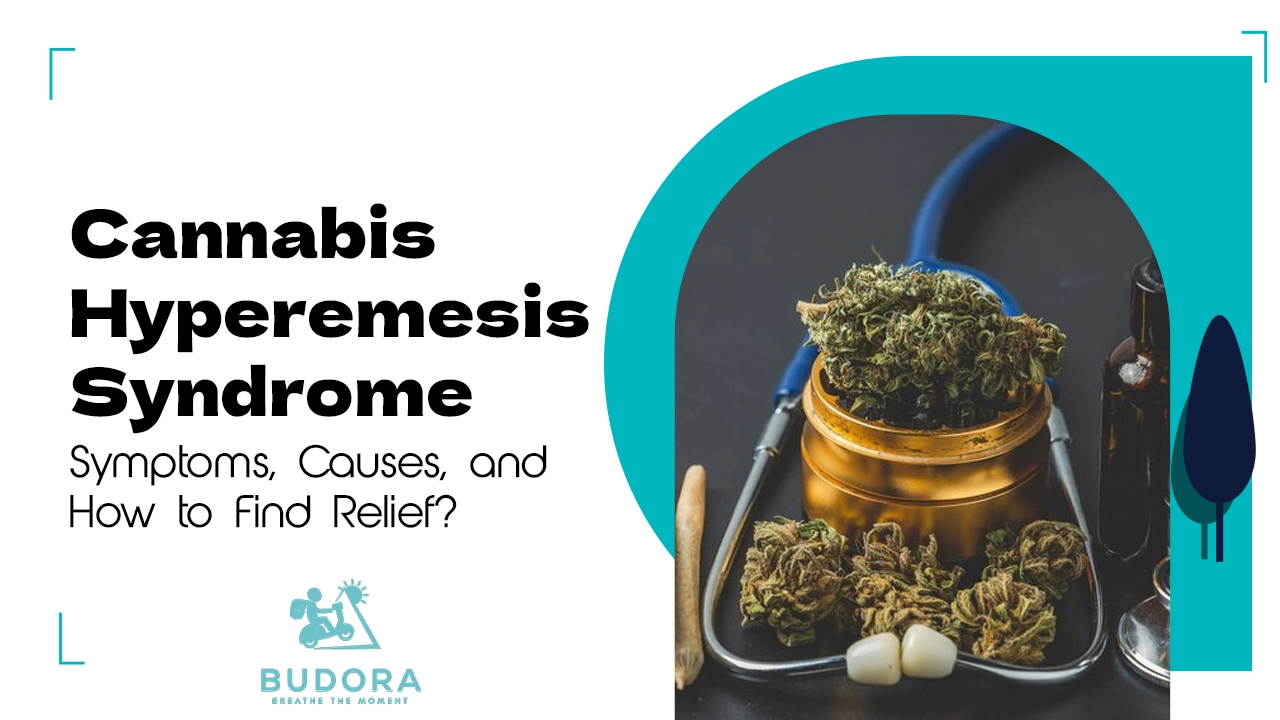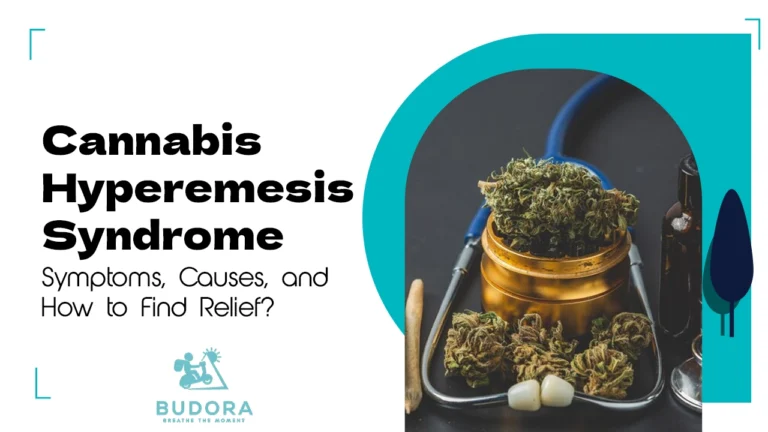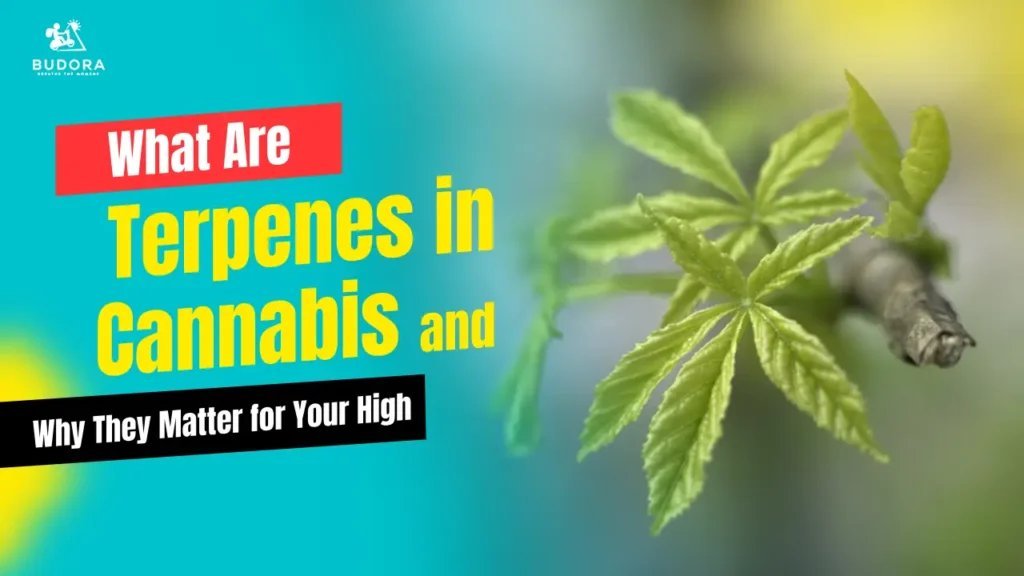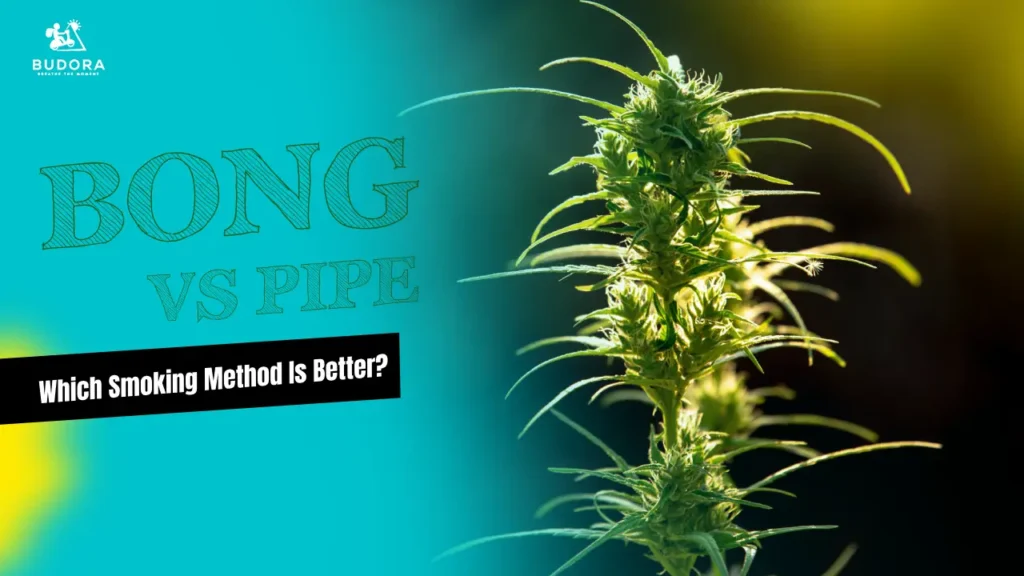Blog
Cannabis Hyperemesis Syndrome: Symptoms, Causes, and How to Find Relief
- Budora Team
- Cannabis WeedBlogs


For many people, cannabis is a go-to for relaxation, managing pain, or even helping with sleep. But what happens when something that’s supposed to help suddenly makes you feel worse, much worse?
This is where Cannabis Hyperemesis Syndrome, or CHS, comes into the picture. It’s a condition that isn’t widely known, yet it’s affecting more people than ever before. If you’ve been dealing with unexplained nausea, constant vomiting, or stomach pain—and you’re a regular cannabis user—this might be something worth learning about.
Key Highlights
- Cannabis Hyperemesis Syndrome (CHS) causes severe cyclic vomiting, nausea, and abdominal pain in frequent cannabis users, often relieved only by hot showers.
- CHS is increasingly common, affecting up to 32.9% of daily users, with emergency visits doubling since cannabis legalization.
- Complete cannabis cessation is the only proven cure, while treatments like IV fluids, antiemetics, and topical capsaicin offer short-term relief.
What is Cannabis Hyperemesis Syndrome?
Cannabis Hyperemesis Syndrome (also known as Cannabinoid Hyperemesis Syndrome) is a paradoxical condition affecting frequent, long-term cannabis users. Instead of helping with nausea, it causes cyclic vomiting, persistent nausea, severe abdominal cramps, and often compels sufferers to take hot showers or baths for relief.
Why Is CHS Increasing?
- Prevalence in chronic users: An ED survey found up to 32.9% of near-daily cannabis users meet CHS criteria, extrapolating to ~2.75 million potential cases in the U.S. alone.
- Rising ED visits: Rates in North America rose from ~15 to ~32 per 100,000 post-legalization, a significant jump during the COVID-19 pandemic.
- High-THC products and unregulated use contribute to increasing cases.
Symptoms & Diagnostic Clues
- CHS Symptoms: Persistent nausea, cyclic vomiting, strong abdominal cramps.
- Red Flag: A compulsive need for hot showers/baths for temporary symptom relief.
- Also look for scromiting, dehydration, and weight loss.
- Diagnostic criteria (e.g., Rome IV): chronic cannabis use + cyclic vomiting patterns + supportive behavior like hot showers + exclusion of other conditions.
How CHS Develops: Stages & Mechanisms
Prodromal Phase
-
Mild early symptoms: morning nausea, stomach discomfort, occasional hot baths.
-
It can linger for months or years before worsening.
Hyperemetic Phase
-
Intense waves of vomiting and abdominal pain.
-
Scromiting”: intense vomiting—see how this contrasts with other cannabis side effects in this post, Can You Overdose on Weed?.
-
Hot showers/baths offer soothing via the heat effect — a behaviour we also discuss in Can Cannabis Dehydrate You, which covers CHS-related dehydration.
Recovery Phase
-
Recovery may take weeks, which we compare with outcomes described in the guide to Cannabis for Nausea and Vomiting Relief.
-
Full recovery may take up to 90 days.
Pathophysiology Theories
Genetic Predisposition
Possible genetic predisposition: one study linked mutations in CNR1, CYP2C9, and TRPV1 genes to CHS risk.
Who’s at Risk for Hyperemesis Cannabis Syndrome?
While anyone who uses cannabis could develop CHS, certain groups are more vulnerable:
- Daily or near-daily users
- Young adults and teens
- People who consume high-THC concentrates, like oils, dabs, or edibles
- Long-term users who’ve never taken tolerance breaks
Just like with any health condition, everyone’s body reacts differently. Some may never develop CHS, while others might be affected after just a few years of regular use.
Diagnosis: Separating CHS from Others
- A clinical diagnosis of exclusion: based on history, pattern, and behavior.
- Rule out other causes: imaging and lab tests (CBC, metabolic panel, pregnancy test, CT scans).
- Often misdiagnosed as CVS (cyclic vomiting syndrome), hot-shower behavior helps differentiate.
Effective Treatment Strategies
Cannabis Abstinence
The only definitive cure: symptoms taper off within days to weeks after quitting.
Supportive Care in Acute Phase
- IV fluids, antiemetics (ondansetron, metoclopramide), electrolyte correction.
- Avoid opioids—they may worsen vomiting.
Capsaicin Cream (Topical)
- Applied to the abdomen, 0.025–0.1% cream shows rapid relief in many patients.
- Acts via TRPV‑1 receptor modulation—similar to topical pain relief described in article on Cannabinoid Hyperemesis Syndrome.
- Meta-analysis supports effectiveness, though more RCTs are needed.
Other Pharmacological Supports
- Haloperidol (D2 antagonist) and benzodiazepines help symptomatically; evidence is based mainly on case reports.
- Antiemetics, antipsychotics, and benzodiazepines may improve outcomes during crises.
Preventing CHS & Managing Risk
- Take regular tolerance breaks.
- Use lower-THC or CBD-only products.
- Be alert for early CHS symptoms and hot-shower patterns.
- Seek medical advice swiftly if symptoms appear.
Conclusion
Cannabis Hyperemesis Syndrome is decades overdue for greater awareness, especially as THC potency and use rise. By clearly understanding its symptoms, diagnosis, and treatment (especially hot-water relief and capsaicin therapy), users and clinicians can avoid unnecessary suffering and extensive medical workups.
Encourage readers to share this information with anyone who uses cannabis regularly—early recognition can lead to swift relief and improved quality of life.
FAQs on Cannabis Hyperemesis Syndrome
What is “scromiting”?
How soon after quitting cannabis do symptoms go away?
Can synthetic cannabinoids cause CHS?
Why do hot showers help?
Is CHS permanent?
What’s the difference between CHS and cyclic vomiting syndrome (CVS)?
Are there medications to prevent CHS recurrence?
Like this article?

Budora Team
OTHER ARTICLES YOU MAY LIKE




